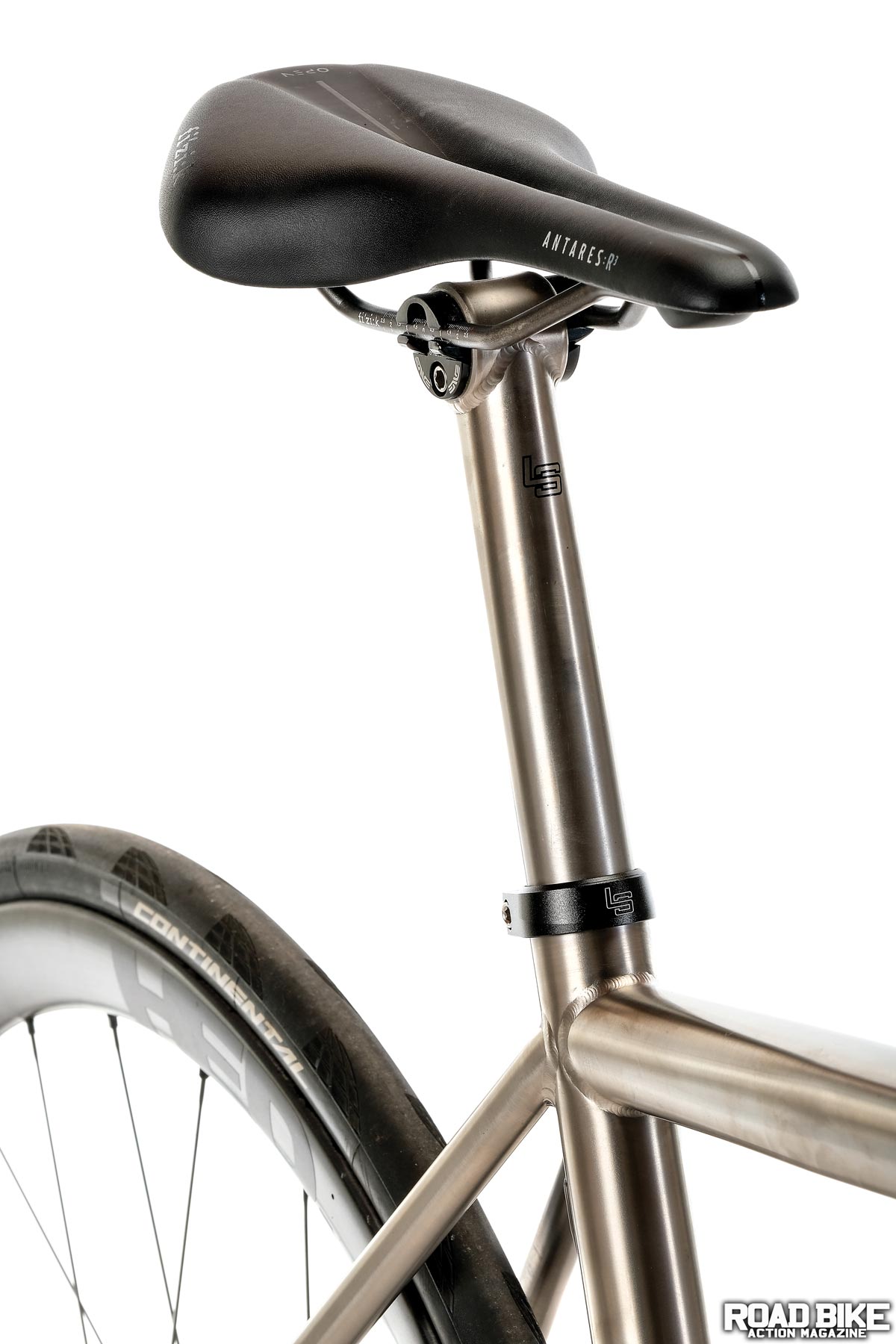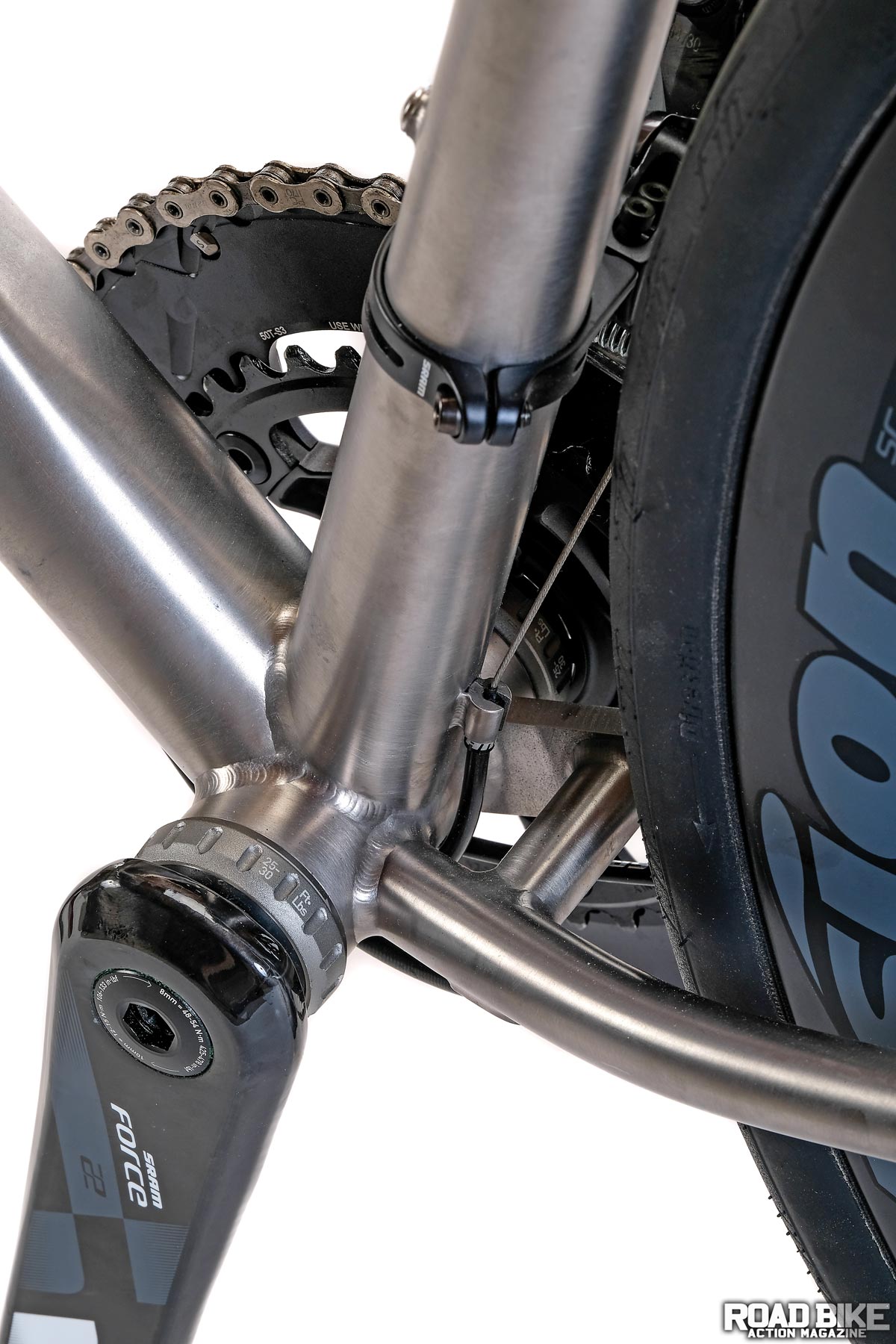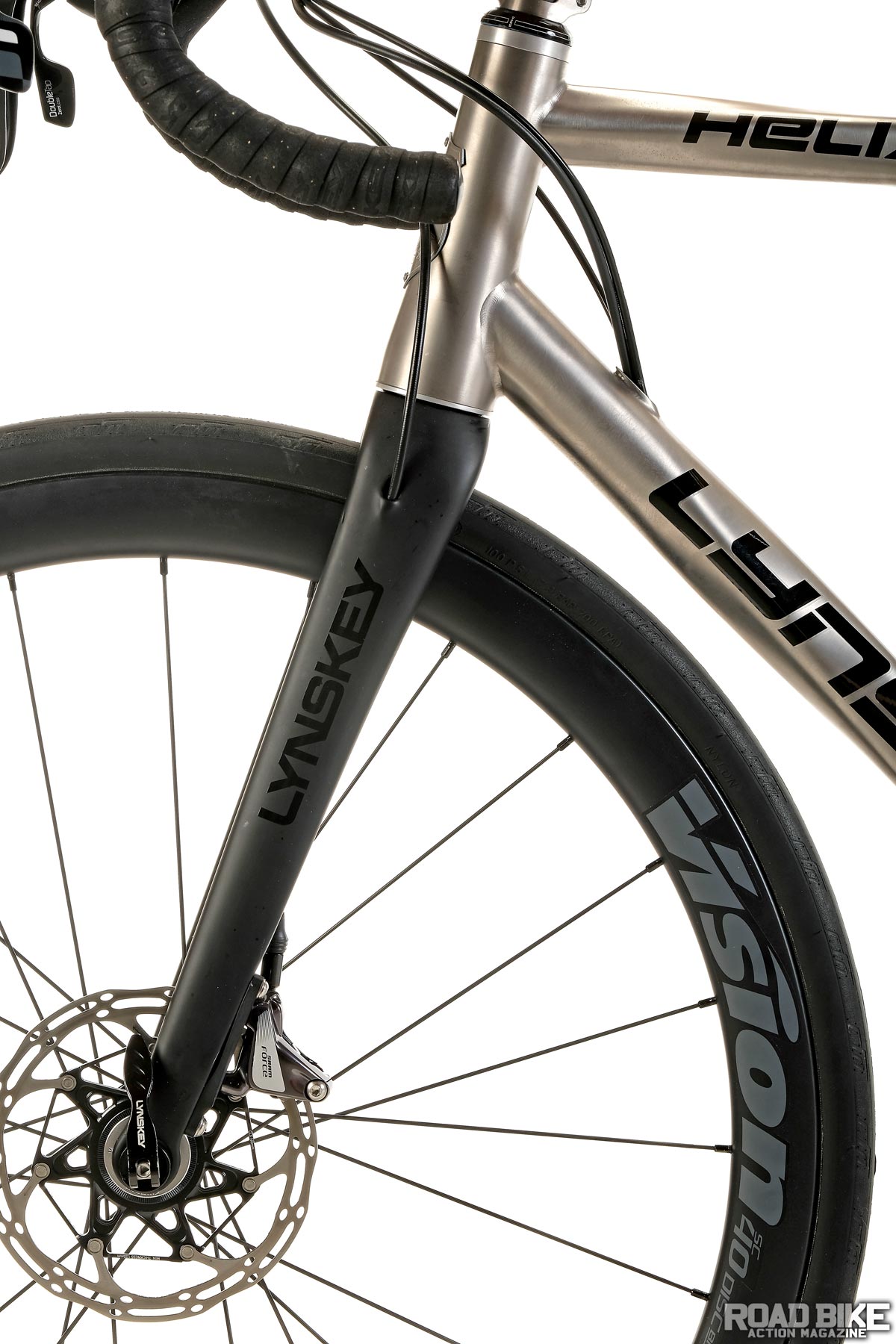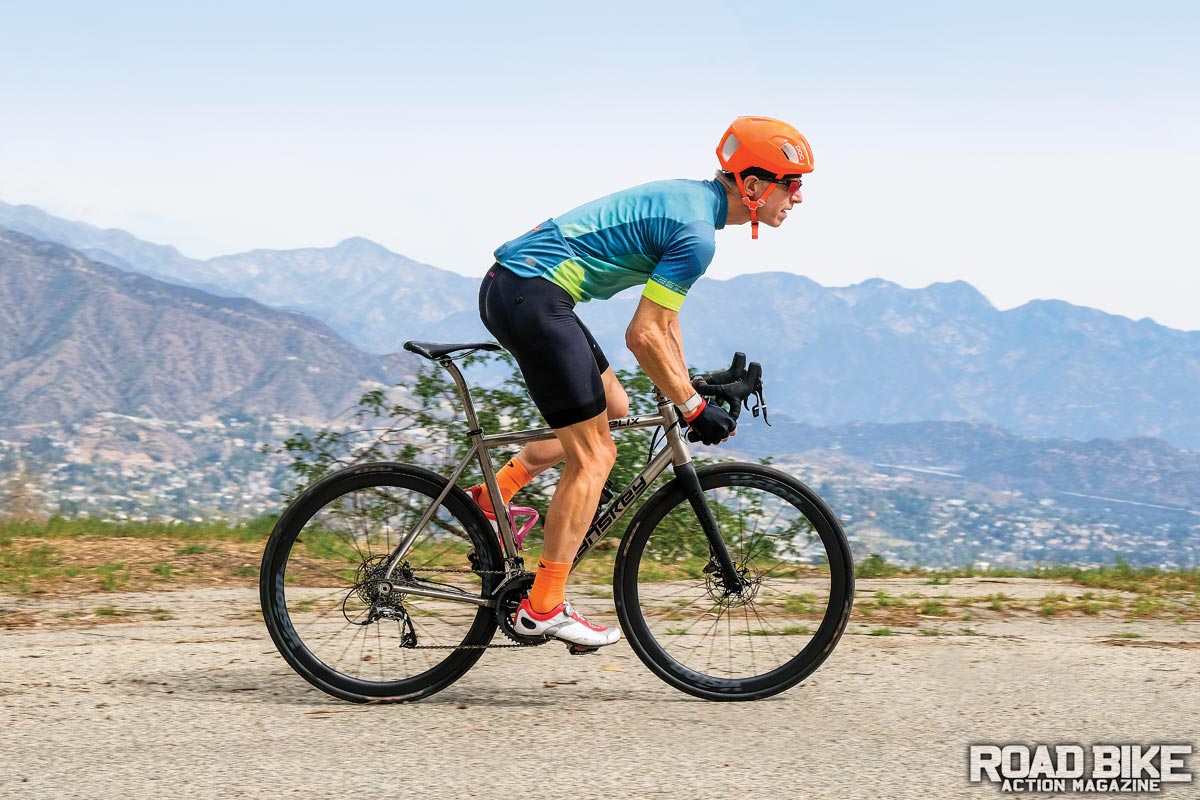“Made in the USA” is more than a claim; it’s a badge of honor. In today’s market, no matter what you make, you have to be at the top of your industry and full of passion to validate keeping things domestic.
When we think of America’s titanium heritage, two names come quickly to mind—Litespeed and Lynskey. Funny fact: although they are competitors now, it was the Lynskey family who founded Litespeed back in 1986 when they parlayed their commercial business and history as industrial metal fabricators into a titanium frame company.
In 1999 the family sold the Litespeed business to the American Bicycle Group, who continue to run the show. After taking a few years off (and waiting for the non-compete to run out), the Lynskey family wanted back in and launched Lynskey Performance in 2006. Both brands have remained in the same Tennessee community, and continue to chase new inroads with titanium frames while still wearing the “made in USA” badge proudly.
THE FRAME
Litespeed
Constructed of 3/2.5 tubes, the Litespeed Ultimate was originally the brand’s go-to race bike with a unique, groundbreaking geometry at the time. Now redesigned, the Ultimate uses tube shaping to optimize stiffness, aerodynamics and compliance, along with what is now considered “modern” geometry. Our size-medium test bike still stays true to its heritage as a race bike, combining 41.5cm chainstays, 73-degree head tube and a 98.1cm wheelbase. Our bike came with the standard PF30 bottom bracket shell, but for $250 it can be swapped out for a threaded T47 shell.
Like the original from 20 years ago, the Ultimate is offered with rim brakes, but our test bike used modern flat-mount disc brakes with 12mm thru-axles. There is a fairly short 12.9cm tapered head tube that is matched with Litespeed’s own carbon fork. The frame leaves room for 30mm tires, but in our testing, there was room to still go a bit bigger. All the cables, wires and hoses are run internally, ensuring a clean aesthetic. For an additional $600, Litespeed also offers custom geometry.
Lynskey
The Lynskeys have always had a knack for pushing the limits of their frame tubes. With their long history in metal fabrication, manipulating tubes comes second nature, and one look at the Helix, it’s clear that they have their own twist on things. The Helix uses an almost square 3/2.5 Ti downtube and top tube that are unlike any other bike due to literally being twisted through the middle portion.
The Helix Disc is a bit less aggressive and has what they consider to be a sport geometry. Our size M/L has 41.5cm chainstays, a 73-degree head tube angle with a 99.4cm wheelbase. There is a 17.6cm head tube when you include the alloy insert for the headset. The frame uses 12mm thru-axles matched with flat-mount disc brakes that are attached using a specific alloy adapter. Lynskey only offers the Helix with a BSA threaded bottom bracket, but all the cables, wires and hoses are run internally. A carbon Lynskey fork can be upgraded to an Enve fork for $400.
THE PARTS
Litespeed
When it comes to the build kits, Litespeed offers four build levels—from Shimano Ultegra mechanical all the way up to SRAM Red eTap or Shimano Dura-Ace Di2. Our build sat in the middle with Shimano Ultegra Di2. The mid-compact (52/36) crank is matched with an 11-28 cassette for a great balance of speed and climbing gears. The bars and stem are Easton EA70 alloy for a balance of quality, weight and stiffness.

We opted for the upgraded Litespeed Ti post that is a $185 upgrade and offered with either a zero or 20mm offset. The one upgrade that we went all in on was with the wheels, and Litespeed offers four options. We chose the made in USA HED Vanquish 4GP carbon wheels that are a $1,525 upgrade. The wheels had a set of 25mm Continental Ultra Sport II tires mounted.


Lynskey

Lynskey offers 10 build options for their Helix Disc, and our build is a bit on the budget side of the spectrum. We opted for the SRAM Force 22, which is a $675 upgrade from their base model. The compact (50/34) crank is matched to an 11-32 cassette for plenty of climbing-oriented gears. We did opt for a few upgrades like the $250 Ti stem and $180 Ti seatpost. An FSA Omega Compact Alloy handlebar finalizes the cockpit, while a Lynskey Pro chromoly railed saddle tops the post.

For wheels, we also opted for an upgrade to the carbon Vision SC 40 disc. This upgrade offered tubeless compatibility and a drop of about 300 grams. The wheels came with a set of Kenda Valkyrie Elite 30mm tires. The frame is said to fit up to 32mm, but that might be tight depending on the wheelset.

THE RIDE
Litespeed
On the road, the Ultimate is sporty and quick. There is a race-like handling aspect to the bike that is complemented with stable and predictable handling. This is then enhanced with a ride quality that mutes the vibrations. You get a bit of road feedback, but the material seems to mute the big stuff. The combination of the square-shaped top tube and truncated airfoil downtube help increase lateral stiffness in or out of the saddle. In corners, the bike tracks predictably, and we found ourselves confidently leaning deep into turns.
Lynskey
With the Helix the ride quality is very similar to the Litespeed, and we would even say it’s more compliant. Sure, it has larger tires that help, but the twisted tubes seem to have a very subtle spring effect. The Helix corners with confidence, but its longer and higher geometry mean you have to work it a bit more. The gearing on our test bike was fantastic for the steep local hills we ride often, but left us spinning out on the long descents. While we haven’t had any issues, the alloy spacer used on the headset does seem like a point where creaking could occur. We love that it has a threaded bottom bracket, but wish it was the newer T47 option that fits a wider range of cranks.
THE VERDICT
At the end of the day, both bikes have their target customer. The Litespeed Ultimate is really pushing the limits of performance with its subtle but effective tube shaping. The Lynskey Helix is pushing the limits of metal manipulation, which results in more compliance and a bit more weight. Litespeed has opted to do things a bit harder and doesn’t use any of the alloy adapters that make designing a frame cheaper to produce. The Helix does have a bit more room for tires, and the geometry is also on the more relaxed side of the spectrum.
Both brands offer plenty of upgrades and options, allowing each to be unique, but Lynskey does offer the least expensive complete option at $3550. Litespeed doesn’t offer a build that low, as they’re targeting the performance customer with the Ultimate. In this day and age when the level of craftsmanship seems to be fading in the industry, both these bikes shine with very good welds.
No matter which bike you choose and options you pick, go for the wheel upgrade above all else. Ti seatposts are nice but can be added later. Also, consider the finish, because a matte/bead blasted bike looks very cool but can be harder to maintain.
For us, the look of the Lynskey is unique and a conversation starter, but the performance of the Litespeed did all the talking. The Litespeed might set you back a few extra bucks, but realistically if you build them up the same, there is only a very small difference in price.
If the budget is holding you back, then the Lynskey is a great option that will last for years, giving you plenty of time to upgrade and make it your own. With that said, the BSA bottom bracket is threaded but limiting on crank options, while the T47 upgrade on the Litespeed can offer the widest range of compatibility while still being threaded.
LITESPEED PUNCH LINES
• A bike that has earned its legacy
• Made in USA
• Custom geometry
LYNSKEY PUNCH LINES
• Metal manipulation to the extreme
• Missing a few of the small details
• Made in the USA
LITESPEED STATS
Price: $3369 (with carbon fork and headset)
Weight: 18.61 pounds
Sizes: XS, S, M (tested), M/L, L, XL
www.litespeed.com
LYNSKEY STATS
Price: $2430 (with Lynskey #6 disc, carbon fork and headset)
Weight: 19.36 pounds
Sizes: XS, S, M, M/L (tested), L, XL
www.lynskeyperformance.com
LYNSKEY GEAR
Helmet: POC Ventral Spin
Jersey: Castelli Flusso
Bib: Assos T.Neo Pro
Shoes: Lake CX 331
Socks: Oakley
Gloves: Supacaz SupaG Short Finger
Glasses: Oakley Flak Jacket
LITESPEED Gear
Helmet: Abus Aventor Quin
Jersey: Union Sport
Bib: Union Sport
Shoes: Gaerne G.Chrono
Socks: Supacaz SupaSox Asanoha
Glasses: Tifosi Crit








Comments are closed.